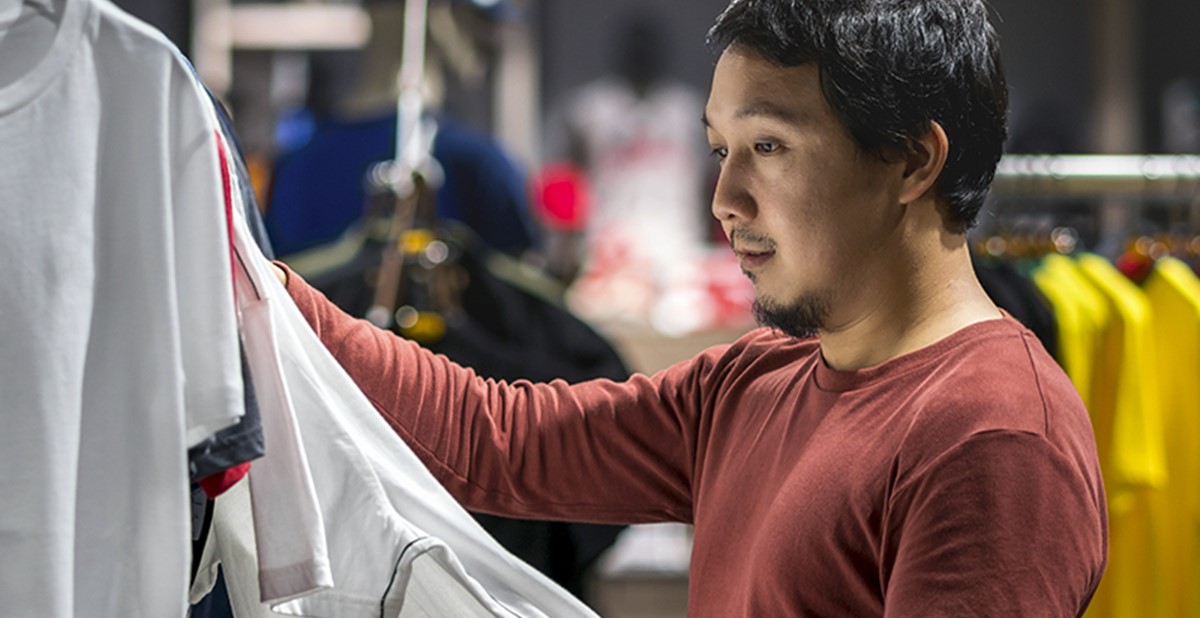When Client Expectations Become Unrealistic

Q A DISTRIBUTOR ASKS: I have a customer who places a large order of t-shirts every year. He is very particular—even to the point of using a ruler to measure consistency among shirts. In the most recent order, he has found some that are uneven, and he does not want his group to have to inspect every shirt for quality control. The shirt is printed with seven colors.
This happened a year ago with the same client and a different decorator, and at that time I did not see discrepancies outside of what would be considered an acceptable margin. Before this order, I counseled the client on acceptable margins, the weight of the shirt and the complexity of seven-color printing. What is a fair resolution to this problem?
A We have had similar clients in the past. Since we are the printer as well, we have often walked our customers through the actual printing process, from the creation of the artwork to the printed shirt, pointing out the complexity of the actual process. In this digital age, so many people clearly do not understand what is involved in screen printing. This usually opens up their eyes to the time and talent that it takes to screen print a shirt.
I also like to advise clients that screen printing is not an exact science, but it is art.
KRIS MONROE
Customer Care Manager
Champion Awards, Inc
PPAI 103877
---
Sometimes just asking the client directly, “What will make you happy?” will get to the root of the problem. This client could be using the decoration “issue” as an excuse to get a discount or stall for time to pay the large invoice. Maybe there is something else going on that you are not aware of. Getting them to define what a winning outcome looks like will prevent you from losing more time, money and peace of mind.
KEVIN BOWES
Owner
Blue Ladder Brand Solutions, LLC
PPAI 716802
---
Going forward, a quick sentence pertaining to the item you are providing is all you need. You can use the same language that your printer uses. For silk screening, I say something like, “Every effort is made to print your artwork on your clothing to the specifications that we quoted; however, due to manufacturing irregularities and equipment limitations, some allowance is made for these issues.”
FRAN HERMAN
Vice President
Ellaprint.com
PPAI 578855
---
For a large automatic screen printing machine running at regular speed, how many seconds does the operator have to get the blank t-shirt aligned onto the press plate? Five? Seven? Neither the shirt material nor the screen printing process nor the expert technician were designed in a laboratory using laser-sighting technology or GPS-enabled targeting. Shirts and collars can be sewn differently or off-center, or a puff of air can catch under the fabric as it is laid out; the shifting of the plate to the next station can swing it ever so slightly out of its initial placement alignment.
Screen printing on fabric that moves onto the press, around the press, off the press, and then is heat-cured is intrinsically different than printing on paper. The expectation that the exactitude found in printing on paper can always be achieved using the screen printing process is not applicable. A high-level education on the screen printing process—especially with a seven-color logo—might help the client understand the capabilities and possible shortcomings of the process and more successfully manage their expectations of exactitude and repeated perfection.
JOHN CHEEVERS
Director, Strategic Partnerships
eCompany Store, LLC
PPAI 158356
---
It sounds to me like you need contracts with both your customer and your printer to dictate what is and isn’t acceptable. This should include colors, placement, etc., as well as who is responsible for inspecting each garment and at what cost, the timeline to complete the inspection and the remedy for unacceptable items. Additionally, your customer needs to be educated on industry standards and overruns. On a job of 6,000 pieces, he could receive 300 that he deems unacceptable. If he wants to receive 6,000 pieces that are guaranteed to be up to his standards, he needs to order more than 6,300.
CHRIS CLARK, CAS
President
Radius Marketing Solutions
PPAI 620302
---
You are the only person who is not being treating fairly. Any company that consistently treats you poorly isn’t really a customer—they are a time-intensive, toxic source of aggravation. You deserve better.
In fairness to everyone, politely suggest that he take his business elsewhere. Most likely it’s a suggestion he has heard before.
DAVID J. HAWES
Brand Architect
Geiger
PPAI 105182
---
Give him 10 percent off, get paid, then fire the client.
ELLIOT LURIE
President
Custom Design Marketing
---
Do You Have An Answer?
A Distributor Asks:
Several weeks after a client received their order, they decided to purchase more of the same product. Even though it’s been less than a month since the first order, the supplier will charge me a second setup fee. I’m not comfortable charging my client this fee, but I don’t really want to absorb it, either. Has anyone else found a good solution to this problem?
What’s Your Answer?
Email answers along with your name, title and company name by September 28 to Question@ppai.org for possible inclusion in an upcoming issue of PPB magazine.
---
Terry Ramsay is associate editor of PPB.

